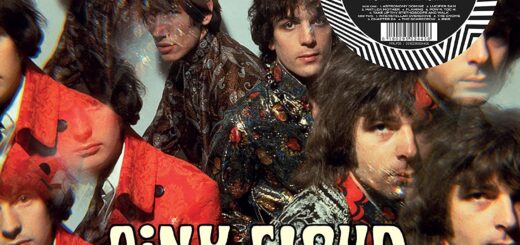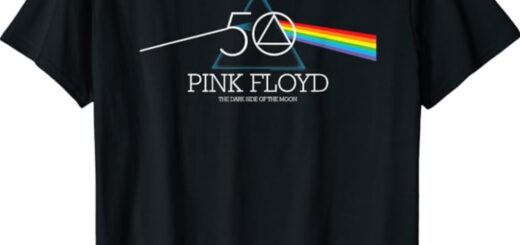Pink Floyd Animation Competition Winner Announced Next Week
The winner of the Pink Floyd Dark Side of the Moon Animation Competition is set to be announced next week. The competition was announced as part of the Dark Side of the Moon 50th Anniversary and there is £235,000 of prize money up for grabs. I wish I had entered a video now! Sadly, the competition closed in December 2023.
I watched a video on Pink Floyd’s Facebook page earlier where Nick Mason explained what happens next with the competition. There is a transcript below of the video.
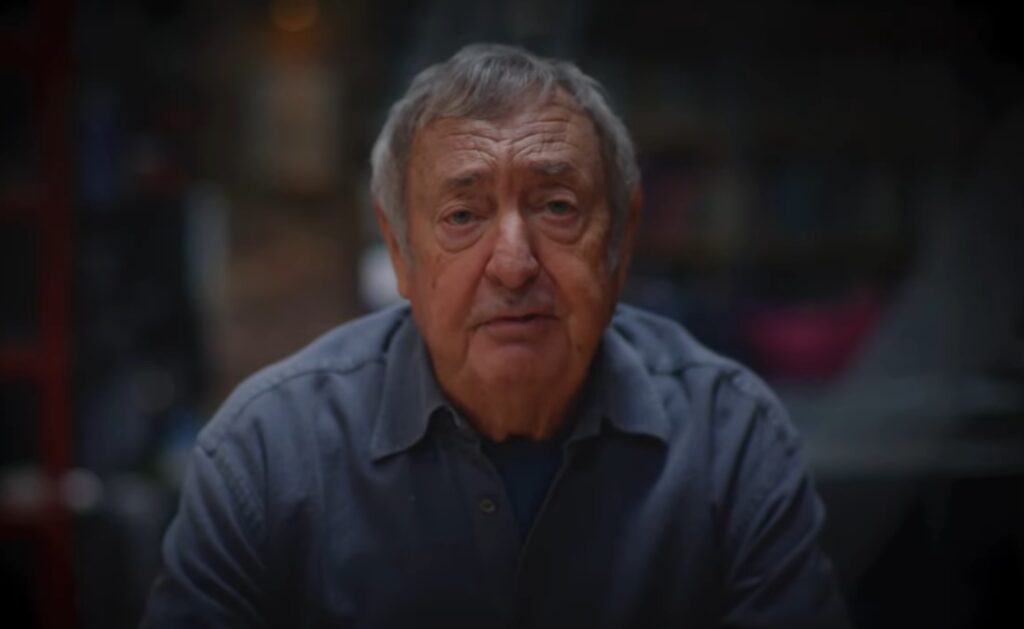
“Hi, I want to let you know that in a weeks time I will be announcing the results of Pink Floyd’s Dark Side of the Moon animation competition.
We’ve been overwhelmed by the responses with over 900 entries. Each one was carefully vetted and a selection made for the nine judges to make their choices.
The films came from all over the world and covered almost every genre of animation. The skill and time taken throughout was enormously impressive, and on behalf of the band, I want to say thank you to all those who participated.
The ten winners will be announced, with one film chosen for each of the tracks on the Dark Side album. Of the ten winners, three will be selected by the panel for outstanding merit in animation, and be rewarded as such.
I look forward to seeing you in a weeks time when we announce the winners. See you then!”
Nick Mason – Youtube
Overview of the Competition
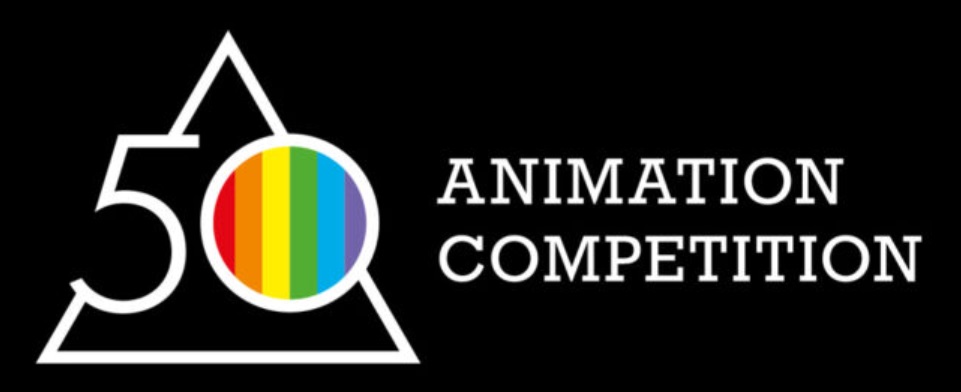
Pink Floyd organized an animation competition to celebrate the 50th anniversary of their iconic 1973 album “The Dark Side of the Moon.” The competition, which is now closed, invited a new generation of animators to create music videos for any of the ten songs on the album. This initiative was curated by Aubrey ‘Po’ Powell of Hipgnosis, a company with a long history of collaborating with Pink Floyd on their album artwork and visuals.
Animators were given the opportunity to present a fresh take on these classic songs, with the potential to have their work become part of the band’s visual legacy. Each animator could submit up to ten videos, one for each song on the album. The winners of the competition were to be selected by a panel of judges, including Nick Mason from Pink Floyd and Aubrey Powell. The competition offered an impressive cash prize of up to £100,000.
The competition entries closed on December 31, 2023, and the entrants are to be contacted in due course. This competition provided a unique opportunity for animators to contribute to the visual storytelling of one of the most influential albums in rock history
Pink Floyd Animation Competition Judging Panel
The judging panel is made up of 9 people including Pink Floyd drummer Nick Mason and The Wall animator Gerald Scarfe.
Other judges who are experts in their field include photographer and film maker Anton Corbijn, TV executive Alan Yentob, film director Sarah Smith, feature film director Daisy Jacobs, Pentagram designers UK chairman Harry Pearce and Month Python contributor Terry Gilliam.
£235,000 total in cash prizes consisting of:
- £10,000 prize for the winner for each song:
-
- Speak To Me;
- Breathe (In The Air);
- On The Run;
- Time;
- The Great Gig In The Sky;
- Money;
- Us And Them;
- Any Colour You Like;
- Brain Damage;
- Eclipse;
-
- Additional bonus prize overall:
-
- 1st Prize: £100,000
- 2nd Prize: £25,000
- 3rd Prize: £10,000
-
Pink Floyd Animations
Some of the original animations for the album are played on the large circular screens during live Pink Floyd performances.
Over the years, Pink Floyd has been known for their innovative use of animations in their music and live performances. One of the key figures in this aspect of their work was Ian Emes, Pink Floyd’s original animator. Emes was recognized for his experimental film techniques and contributed significantly to Pink Floyd’s visual representation, especially during their live tours. He created animations for some of their most iconic songs, including the spinning clock faces of “Time” and the heartbeat of “Speak to Me.” Emes’ work was featured in various exhibitions and tours, solidifying his role as a pioneer in combining music with visual art in an innovative way.
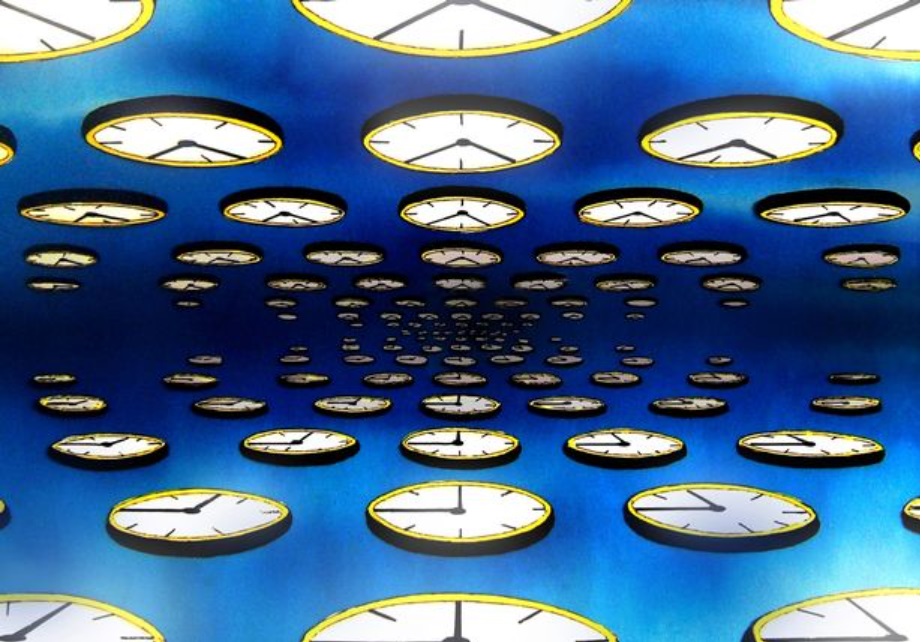
A pivotal moment in Pink Floyd’s use of animation came with their 1982 musical film “The Wall,” directed by Alan Parker and based on the 1979 album of the same name. This film featured 15 minutes of animated segments by political cartoonist Gerald Scarfe. The film’s animations were metaphorical and symbolic, complementing the album’s themes of mental isolation, war, and personal turmoil. These animations are known for their dark, evocative style and are considered a crucial element of the film’s storytelling.
The animation cells from “The Wall” are particularly notable, showcasing the distinct style and thematic elements of the animations. Scenes like the “Marching Hammers” and other symbolic images from the film have become iconic in the world of rock music and animation. These pieces reflect the unique and ground breaking collaboration between Pink Floyd and the visual artists who contributed to their work.
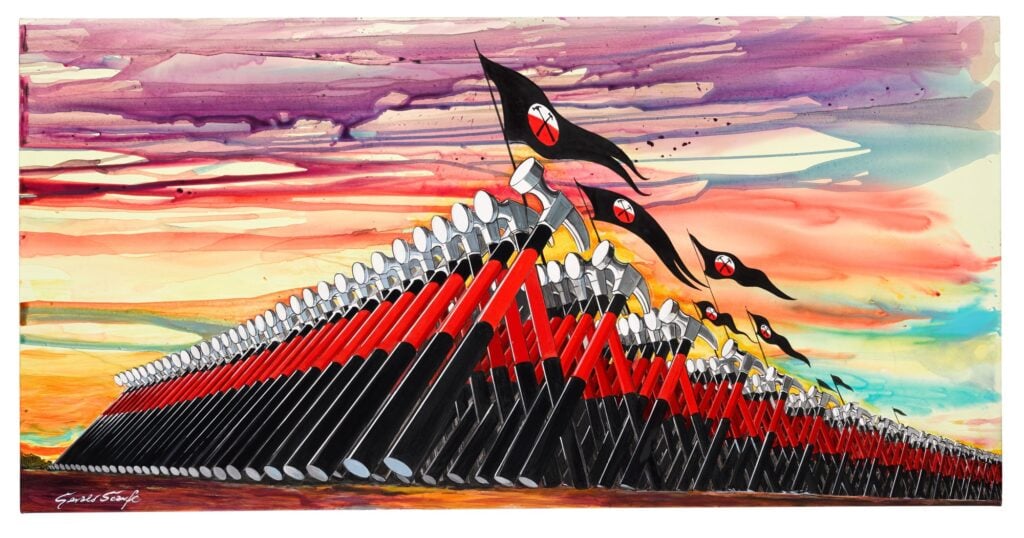
Throughout their career, Pink Floyd’s integration of animation into their music and live shows has not only enhanced their musical storytelling but also set a standard for creative innovation in the world of rock music.
Pink Floyd Visuals are a Defining Feature of the Band
I think Pink Floyd has always been a visual band from the early days where they would use oil slide projections during live performances.
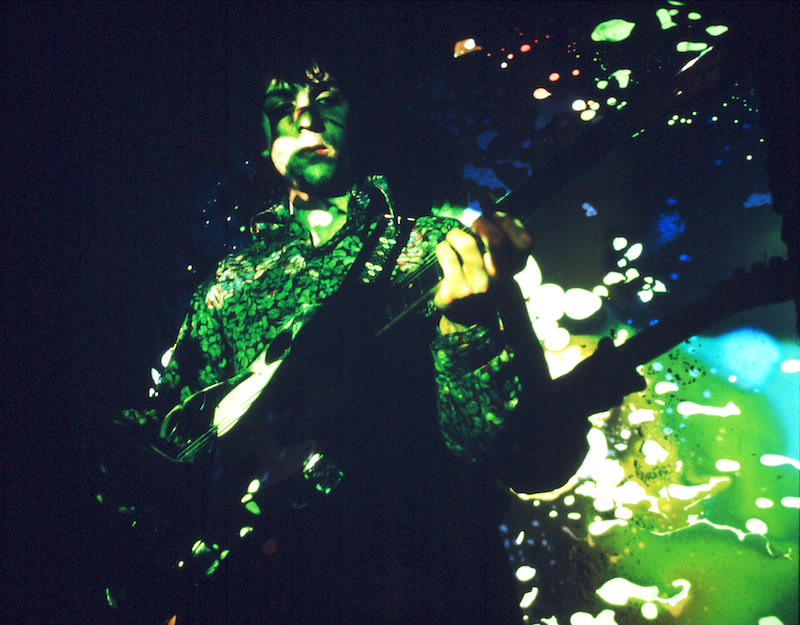
Pink Floyd’s early live performances were notable for their experimental and immersive visual elements, which played a significant role in their shows. In the initial stages of their career, especially around the mid-1960s, the band began to integrate unique visual effects into their performances, moving away from their initial R&B-focused setlist towards a more psychedelic style. This shift was in sync with the evolving underground culture in London, and Pink Floyd quickly gained a following for their distinctive audio-visual shows.
By the time they were promoting “The Dark Side of the Moon” in 1973, Pink Floyd’s live performances had become elaborate productions. They used props, pyrotechnics, and special effects extensively. Notably, a large-scale model plane was flown over the audience, crashing onto the stage with an explosion. This dramatic spectacle was a hallmark of their shows during this period and later featured in “The Wall” and “The Division Bell” tours.
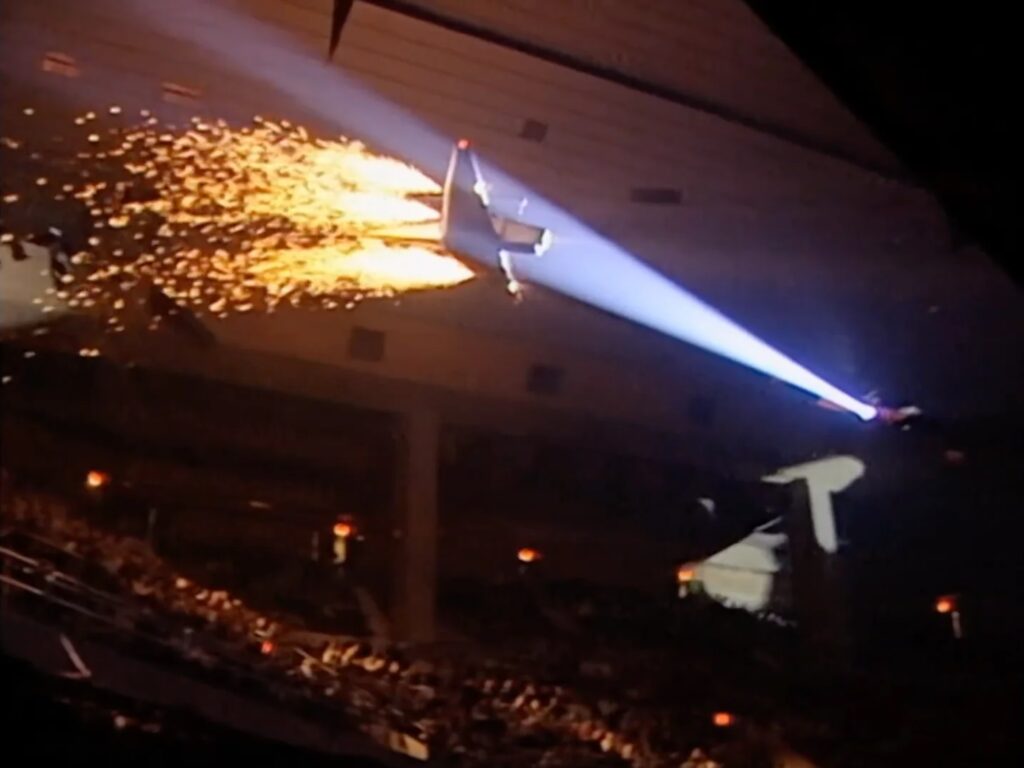
Their shows during the “Animals” tour in 1977 incorporated oversized helium balloons, with the famous giant pig becoming a trademark feature. This pig even caused a stir when it broke free during a photoshoot for the “Animals” album cover, floating into the flight path of Heathrow airport and grounding flights. Their inflatables reached new levels of sophistication during “The Wall” shows, where fully mobile giant string puppets based on characters from the album were used, designed by the satirical artist Gerald Scarfe. The creation and demolition of a massive wall on stage was a central element of these performances.
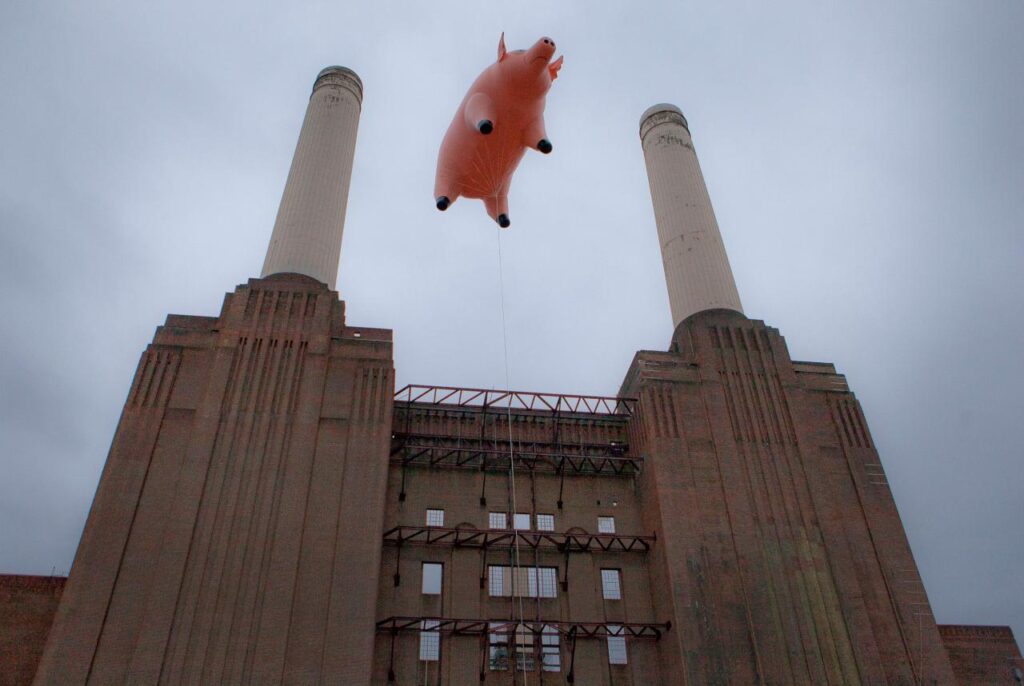
These early experiments with visuals were not just confined to stage props and pyrotechnics. Pink Floyd was also among the first bands to use synthesisers in their music, reflecting their innovative approach to both audio and visual aspects of their performances. The integration of these elements helped establish Pink Floyd as pioneers in creating a holistic and immersive concert experience, which has had a lasting impact on live music performances
Links – Pink Floyd animation homepage, Nick Mason Youtbe Video,


